Corydalis sempervirens, pink corydalis, is a delicate biennial herbaceous native plant that can be found on rocky summits. An older scientific name is Capnoides sempervirens. Other common names include pale corydalis and rock harlequin.
Flowers
Corydalis sempervirens, pale corydalis, is part of the Fumitory (Fumariaceae) family of plants that include two other familiar plants: squirrel corn and Dutchman's breeches.
Inflorescence
The showy clusters of mauve-pink tube-like flowers hang from the ends of branched stems. The clusters contain from 1 - 8 flowers.
Cluster of flowers: side views.
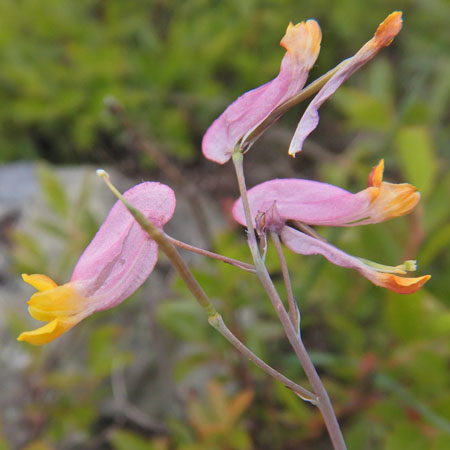
Cluster of flowers: top front views, flowers are narrow.

Flowers
The Corydalis sempervirens flower has 2 pink sepals (one on each side) and 4 pink petals with yellow tips. It has 2 outer petals, upper and lower and two inner petals, upper and lower. The outer upper petal has a blunt spur at the back that contains nectar. The yellow tips of the outer petals are broad and have side wings that fold back.
The two inner petals are claw shaped - spoon shaped. The petals are narrow at the base (claw) and abruptly wide at the tip (blade). The claw section is much longer than the blade. There is a high keel on the yellow tips of the each inner petal. The two inner petals are attached at the tips and there is one keel on top and one below.
Shown are the sepal, blunt spur, as well as the petals and yellow tips. The flowers are up to 3/4 inches long. It is difficult to see the edges of the petals.
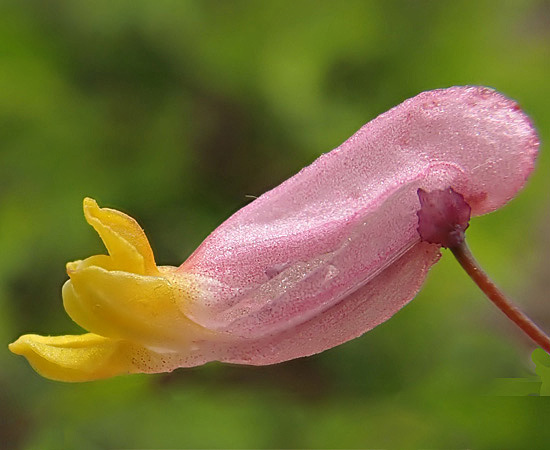
View more from the back.
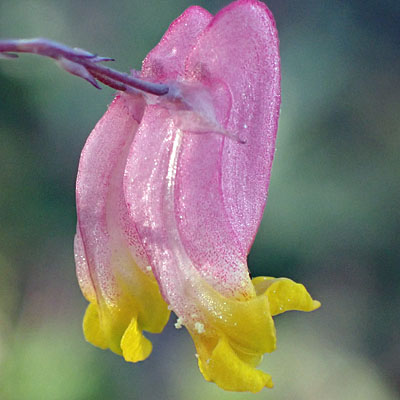
Close-up view of the yellow tips.
Red arrow: outer upper petal with wings folding upwards
Green arrow: attached upper and lower inner petals
Blue arrow: outer lower petal with wings folding downwards
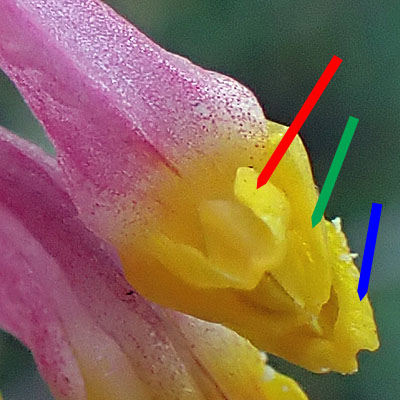
Shown is a closer look at the attached inner petals with the sharp keels of the upper and lower petals.
Also the outer lower petal is more clearly shown.
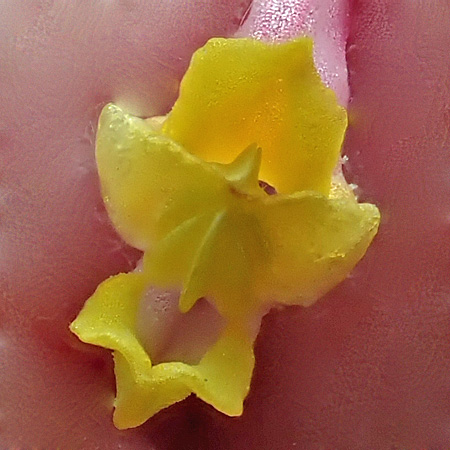
Inside the flower there are 6 stamens and 1 pistil. We can see them in some older flowers.
Shown is an older open flower exposing the stigma and the anthers.

Shown is a close-up of the stigma and anthers. The stigma is triangular with 4 papillae (bumps)
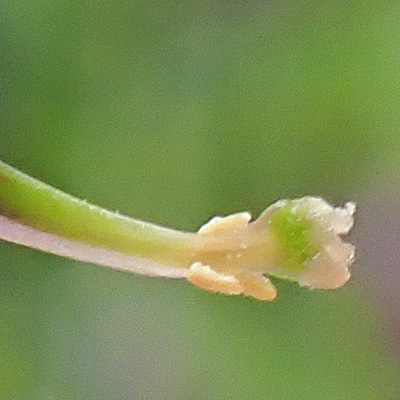
Another open flower and stamens have fallen down on to the lower outer lip
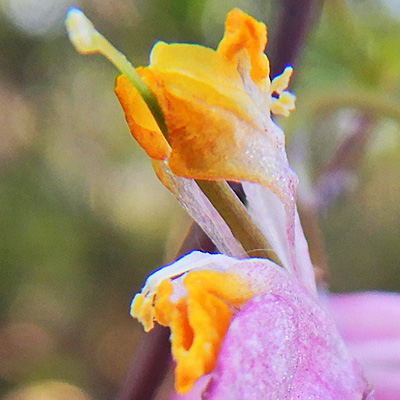
Buds
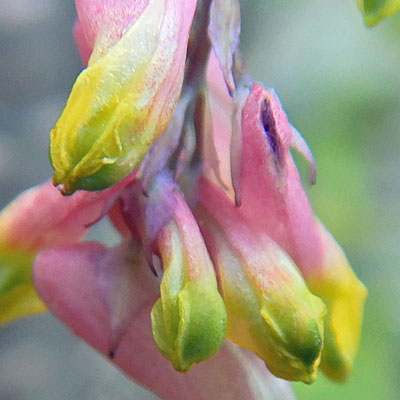
Fruit
Fruit
Pink corydalis fruit is an erect straight narrow capsule up to about 1.5 inches. Its surface is rough. The seeds are about 1mm and are dispersed by ants.
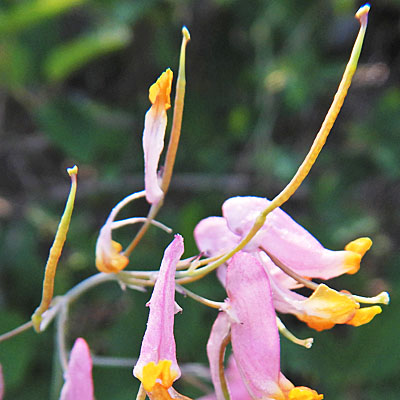
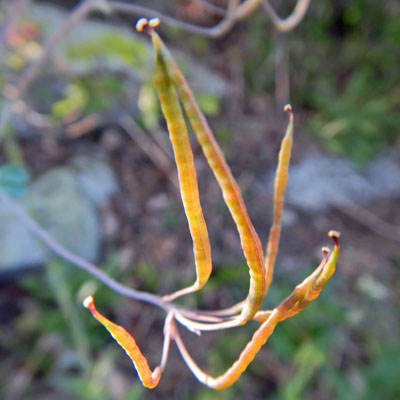
Leaves
Pink corydalis leaves are alternate and compound with 3-4 leaflets which have lobes. The margins are smooth. The upper leaves are sessile and the lower leaves have petioles (leaf stalks). Photos of cauline (stem) leaves and basal leaves:
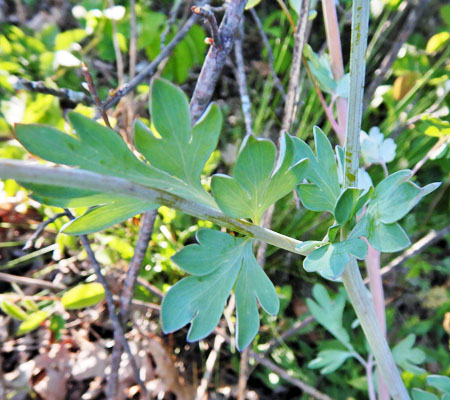

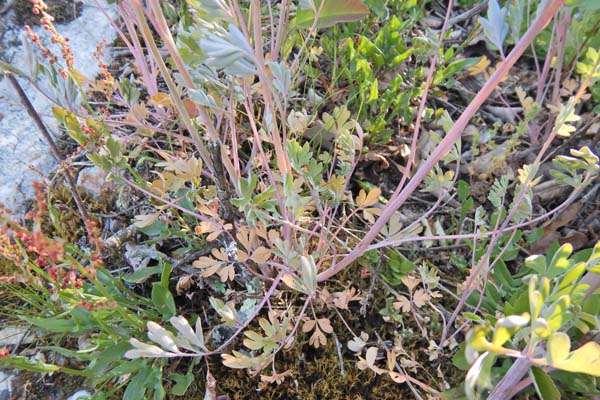
Plant & Habitat
Pink corydalis is biennial, so first the plant from seed produces a basal rosette of leaves. The next year it sends up a branched stem with cauline leaves and many flowers. Usually there is one stem and sometimes many. However, some references have said that the plant is annual or perennial. The stem ranges from 12 to 30 inches tall.
Pink corydalis is usually found on rocky ledges, summits, and disturbed areas that have partial or full sun. It is native to northeastern North America.
In NJ, pink corydalis is S4 - Apparently Secure. In iNaturalist, in NJ, pink corydalis was found mainly in the northern counties (2024).
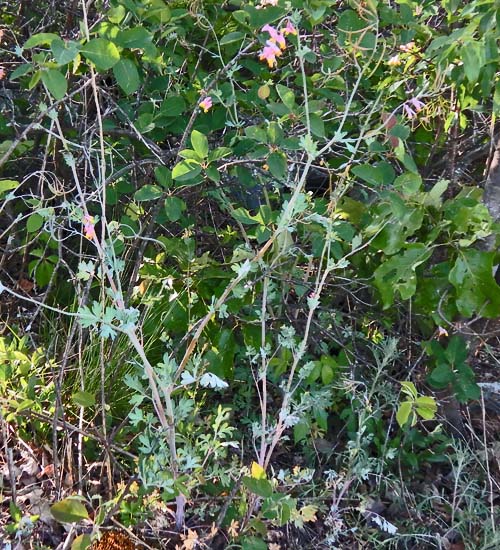
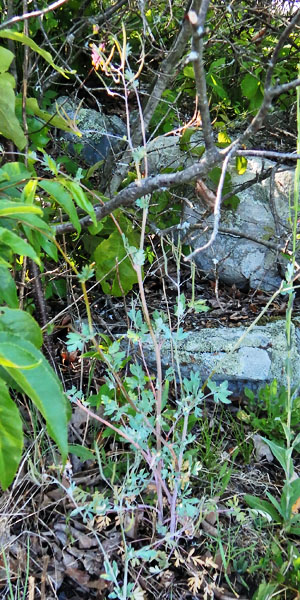
Text by Millie Ling and all photos by Hubert & Millie Ling. Photos: High Point State Park, Sussex County. All photos taken 5/24 and 5/30 2023. See iNaturalist.org for locations.
Additional information / References
Additional information / references:
- The USDA website shows Corydalis sempervirens- Pink Corydalis distribution in the US and other information: https://plants.usda.gov/home/plantProfile?symbol=COSE5
- FNA - Flora of North America http://floranorthamerica.org/Corydalis_sempervirens
- Wildflower.org https://www.wildflower.org/plants/result.php?id_plant=COSE5
- Plants of the Eloise Butler Wildflower Garden https://friendsofeloisebutler.org/pages/plants/palecorydalis.html